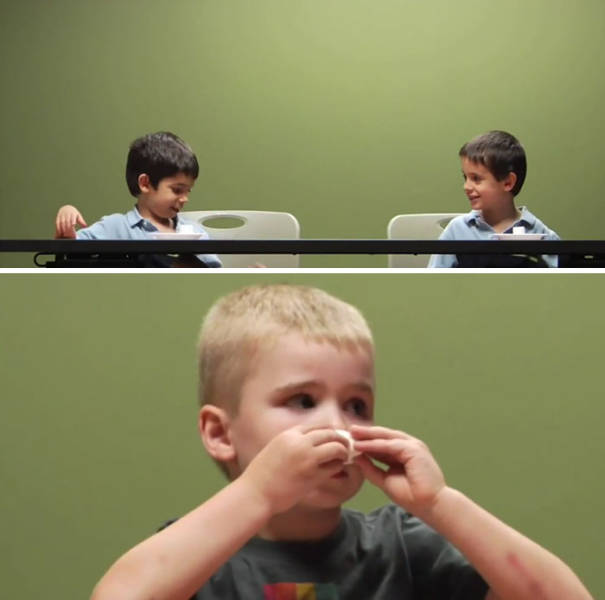The Marshmallow Test Experiment

The Stanford marshmallow experiment was a series of studies on delayed gratification in the late 1960's and early 1970's led by psychologist Walter Mischel.
Using children of ages four to six as subjects, they were led into a room where a treat (usually a marshmallow, but sometimes a cookie or pretzel stick), was placed on a table, by a chair. The children could eat the treat, the researchers said, but if they waited for fifteen minutes without giving in to the temptation, they would be rewarded with a second treat.
Mischel observed that some would "cover their eyes with their hands or turn around so that they can't see the tray, others start kicking the desk, or tug on their pigtails, or stroke the marshmallow as if it were a tiny stuffed animal," while others would simply eat the marshmallow as soon as the researchers left.
In over 600 children who took part in the experiment, a minority ate the marshmallow immediately. Of those who attempted to delay, one third deferred gratification long enough to get the second marshmallow. Age was a major determinant of deferred gratification.
In follow-up studies, the researchers found that children who were able to wait longer for the larger reward of two marshmallows tended to have better life outcomes, as measured by SAT scores, educational attainment, body mass index, and other life measures.